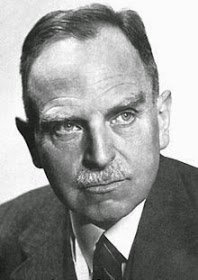Otto Hahn - Inventor of Core Division (Nuclear Fission)

Tukar ke IndonesiaBorn: March 8, 1879 Frankfurt am Main, Hesse-Nassau, Prussia, German Empire
Died: July 28, 1968 (age 89) Göttingen, West Germany
Nationality: Germany
Sector: Radiochemistry, nuclear chemistry Alma mater: University of Marburg
Doctor Adviser: Theodor Zincke Other academic advisers: Sir William Ramsay, University College London; Ernest Rutherford, McGill University Montreal; Emil Fischer, University of Berlin
Student doctor:
Roland Lindner
Walter Seelmann-Eggebert
Fritz Strassmann
Karl Erik Zimen
Hans-Joachim Born
Hans Götte
Siegfried Flügge
Nikolaus Riehl
Known:
Discovery of radioactive elements (1905-1921)
Radioactive Recoil (1909)
The Law of Fajans-Hahn-Paneth Protactinium (1917)
Nuclear Isomers (1921)
Applied Radiochemistry (1936)
Nuclear fission (1938)
Emil Fischer Medal's Prominent Award (1919)
Cannizzaro Prize (1939)
Copernicus Prize (1941)
Nobel Chemistry (1944)
Max Planck Medal (1949)
Paracelsus Medal (1952)
Henri Becquerel Medal (1952)
Pour le Mérite (1952)
Faraday Lektor Prize (1956)
Hugo Grotius Medal (1958)
Legio d'Honneur (1959)
Enrico Fermi Prize (1966)
Wife: Edith Hahn, née Junghans (1887-1968)
Otto Hahn, OBE, ForMemRS (March 8, 1879.
Otto Hahn was an inventor of nuclear division (nuclear fission, 1938), inventor of radioactinium (1905), mesothorium (1907) and protakkcinium (1917), doctorate, professor, author, President Kaiser Wilhelm Society (1948-1960). Together with Frietz Strassmann he was awarded the Nobel Prize for chemistry in 1944.
Early life
Hahn was born in Frankfffurt am main, Germany, on 8 March 1879. He was the youngest son of Heinrich Hahn (1845-1922), a glamor and successful entrepreneur, and Charlotte Hahn, née Giese (1845-1905). Together with his brothers Karl, Heiner and Julius, Otto was raised in a protected environment. At the age of 15, he began to take a special interest in chemistry and conducted a simple experiment in the laundry room of the family home. His father wanted Otto to study architecture, but Otto assured him that his ambition was to become an industrial chemist.
Education
In 1897, Hahn began studying chemistry and mineralogy at the University of Marburg. Hahn joined the Natural Science and Medicine Student Association. In 1901, Hahn received his doctorate in Marburg for a dissertation entitled On Brom derived isoeugenol, a classical organic chemistry topic. After a year of completing his military service he returned to the University of Marburg, where for two years he worked as assistant to his doctoral supervisor, Geheimrat Professor Theodor Zincke.
Invention
Three years after receiving his doctorate, Hahn went to England to study English. He applied for a job and was accepted to University College. Here he meets Sir William Ramsay, a Scottish chemist, the inventor of Helium, Neon, Argonkripton, Xenon and Radon. Hahn was given the task of purifying the rough radium preparation, it turns out that Hahn was an amazing experimentalist. One year later he surfaced an active radioactive substance which he named Radiothorium (1905).
Core division (Nuclear Fission)
In the 1930s Enriko Fermi, an Italian physicist, bombed Uranium, the heaviest natural element. This bombardment produces radioactive substances. But Fermi himself does not know what the element's name is. He thinks that element is an artificial element similar to Uranium. Since 1934 Hahn has been very interested in Fermi's research. He repeated the Fermi experiment with his aide Miss Meitner and Strassmann. They conduct research for 4 years. They bombard uranium with a neutron that produces barium, the element that weighs Uranium. Barium atomic number 56, being atomic number Uranium 92. This discovery was announced in Die Natirwissenschaften magazine on January 6, 1939. But Hahn and Strassmann did not dare to say that it was a core division, For fear of being ridiculed and ridiculed by physicists and chemists of his contemporaries. Core division is regarded as something impossible.
In 1938, when the core cleavage was discovered, Lise Meitner fled to Sweden because he was Jewish. He was afraid of Hitler's death. In Sweden he read Hahn's report. Together with Otto Frisch, his nephew, he explains emphatically, that Hahn's discovery is nuclear fission. Meitner and Otto Frisch submit that the term is used. Hahn's discovery was studied earnestly in the United States until the United States succeeded in making the world's first atomic bomb.
Otto Hahn died in Gottingen, Germany, on 28 July 1968 at the age of 89 years.
the information is good especially for non us citizen